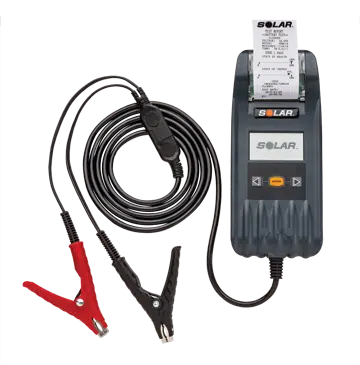As the mercury drops, it is a good time of year to review some best practices when it comes to jump starting heavy-duty vehicles. This is another topic that keeps our Tech Service lines buzzing at this time of year.
Here are 7 tips to remember for Heavy-Duty Jump Starting Success:
1. Always make sure you have the right tool for the job. Jump starters come in a wide variety of sizes and some are designed to perform a variety of functions. But, the primary function of any jump starter is to get your vehicle(s) started when you need it. So, make sure to employ a jump starter that is properly aligned with your specific starting needs. This is doubly important when jump starting heavy-duty vehicles.
2. Take care of your jump starter and it will take care of you. Keep it charged up, especially during extreme temperatures, which are always hardest on batteries. Also, if you can store it at a temperature above 50˚F during the winter months, it will perform better.
3. Don’t underestimate the importance of finding a good vehicle ground for your negative clamp. A complete conductive circuit is an absolute must for jump starting success. You should be looking for a heavy gauge metal part of the vehicle chassis or engine block, away from the battery. NEVER connect to a carburetor, fuel lines or sheet metal body parts.
4. If the vehicle’s battery is a traditional flooded battery, make sure it has the proper water level as identified in the manufacturer’s guidelines. If the water level is low, add distilled water as per the manufacturer’s guidelines. NEVER overfill, which could cause leakage and other problems. Also, remember to NEVER attempt to jump start a frozen battery.

6. On vehicles with multiple batteries, always connect to the battery closest to the starter. This will ensure that the maximum power available from the jump starter is transferred to the starting system, not depleted by the battery bank, which can be quite taxing, depending on the number of batteries involved.
7. On larger vehicles, such as OTR trucks, first take a few minutes to light the glow plugs. Properly connect the jump starter, put the vehicle’s key in the accessory position and light the glow plugs, which should take 20-40 seconds. Then, turn the vehicle’s key to the off position and allow the jump starter to recover for 2-3 minutes. Then, attempt to jump start the vehicle. This process will greatly increase odds of success.
When it comes to deciding what size of jump starter is needed for your heavy-duty jump starting tasks, there are many factors that come into play, including the types of vehicles you need to start, the number of jump starts you are required to perform on any given day, the number of batteries in the typical vehicle to be started and the temperature extremes you experience in your specific climate. Each company’s needs are different and, as noted in Tip No. 1 above, it is important to choose the right tool for your needs.
Often, after speaking to our Technical Service team, fleet operators and implement dealers determine that a roll-around jump starter, such as the SOLAR HT1224
Additionally, a tool that could pay significant dividends when it comes to jump starting heavy-duty vehicles is a digital battery and system tester. This type of tool can help you
identify the source of starting problems: is it the battery(ies), the starting system or the charging system?
The SOLAR BA327 is a great diagnostic tool. Lightweight and ergonomic, it can test batteries rated from 40-2000 CCA, as well as diagnose starting and charging system issues. Plus, it can diagnose all battery types, from traditional flooded batteries to newer AGM and Gel Cell battery types.






